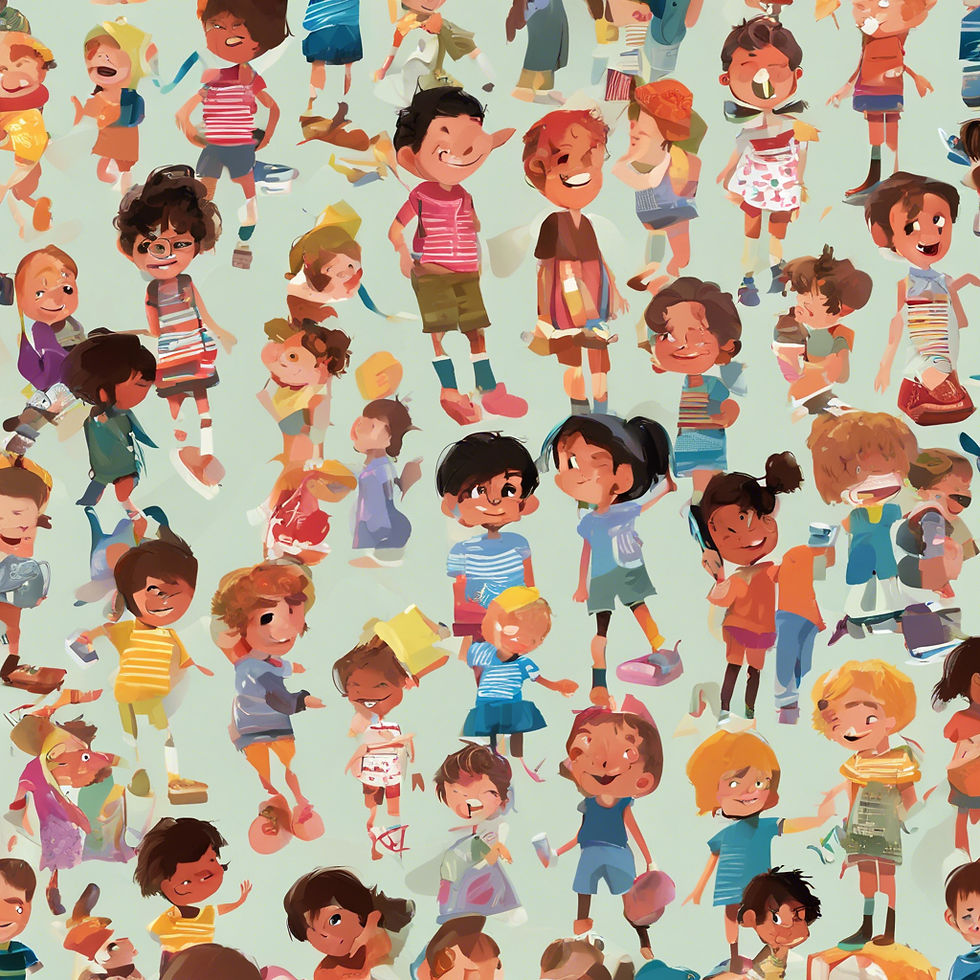CHILDREN AND OCD
- Benjamin Lea
- Jul 1, 2024
- 4 min read

**Understanding OCD: A Guide for Parents**
As parents, it's natural to worry about our children and their well-being. One concern that might arise is if your child starts displaying signs of Obsessive-Compulsive Disorder (OCD). Understanding what OCD is, recognizing the signs, and knowing what steps to take can make a significant difference in your child's life.
What is OCD?
OCD stands for Obsessive-Compulsive Disorder, a mental health condition that affects people of all ages, including children. It is characterized by:
1. Obsessions: These are unwanted, intrusive thoughts, images, or urges that cause significant anxiety or distress. For example, a child might constantly worry about germs or fear that something bad will happen to a loved one.
2. Compulsions: These are repetitive behaviours or mental acts that a person feels driven to perform in response to an obsession. The aim is usually to reduce the distress caused by the obsession, even if the actions don't make logical sense. For instance, a child might wash their hands repeatedly, check that doors are locked multiple times, or arrange items in a specific way.
Signs of OCD in Children
Recognizing OCD in children can be challenging, as their behaviours might seem like mere habits or quirks. Here are some signs that may indicate OCD:
- Excessive Cleaning: Washing hands excessively, bathing multiple times a day, or cleaning objects repeatedly.
- Repetitive Checking: Checking doors, windows, and appliances repeatedly to ensure they are closed or turned off.
- Rituals: Performing certain routines or rituals in a specific order, such as counting steps or arranging toys in a particular way.
- Fear of Contamination: Avoiding touching things perceived as dirty or contaminated, or excessive concern about cleanliness.
- Intrusive Thoughts: Expressing distress over intrusive thoughts or fears, which might be violent, sexual, or simply bizarre.
- Reassurance Seeking: Frequently asking for reassurance from parents or teachers to alleviate their anxieties.
What is CBT and ERP?
Cognitive Behavioural Therapy (CBT) and Exposure and Response Prevention (ERP) are two effective treatments for OCD.
Cognitive Behavioural Therapy (CBT)
CBT is a type of talk therapy that helps individuals understand and change their thought patterns and behaviours. For a child with OCD, CBT focuses on:
- Identifying Obsessions and Compulsions: Understanding what thoughts and behaviours are causing distress.
- Challenging Negative Thoughts: Learning to challenge and reframe the irrational fears and anxieties that drive their compulsions.
- Developing Coping Strategies: Equipping the child with tools to manage and reduce their OCD symptoms.
#### Exposure and Response Prevention (ERP)
ERP is a specific type of CBT that involves exposing the child to the source of their anxiety in a controlled way and preventing the compulsive behaviour that usually follows. The steps typically involved in ERP are:
1. Assessment: The therapist will assess the child's symptoms and severity of OCD.
2. Creating a Hierarchy: Together, the therapist and child will create a list of feared situations ranked from least to most anxiety-provoking.
3. Gradual Exposure: Starting with the least distressing situations, the child will be exposed to their fears without performing the compulsive behaviours. This is done gradually to build tolerance to the anxiety.
4. Response Prevention: The child learns to resist the urge to perform their compulsive rituals during exposure.
5. Repetition: Repeated exposure and response prevention help reduce the anxiety over time.
What to Expect During the Initial Consultation
The first consultation with a therapist can set the tone for the entire treatment process. Here’s what typically happens:
- Building Rapport: The therapist will take time to build a trusting relationship with your child, making them feel comfortable and safe.
- Assessment: A thorough assessment of your child's symptoms, behaviours, and how OCD affects their daily life will be conducted. This might involve questionnaires and discussions with both you and your child.
- Goal Setting: The therapist will work with you and your child to set specific, achievable goals for treatment.
- Education: The therapist will provide education about OCD, helping both you and your child understand the disorder and the treatment process.
- Treatment Plan: A personalized treatment plan will be developed, outlining the steps and techniques that will be used in therapy.
Supporting Your Child
As a parent, your support and understanding are crucial in your child's journey with OCD. Here are some ways you can help:
- Learn About OCD: Educate yourself about the disorder to better understand what your child is going through.
- Be Patient: Recovery is a gradual process, and setbacks are normal. Patience and encouragement are key.
- Avoid Accommodation: Resist the urge to accommodate your child's compulsions, as it can reinforce their OCD behaviours.
- Encourage Therapy: Support your child's participation in therapy and celebrate their progress, no matter how small.
Understanding OCD and its treatment options can empower you to help your child effectively. With the right support and resources, children with OCD can lead happy, fulfilling lives.
By Ben Lea, CBT & EMDR Therapist, Congleton, Cheshire
.png)



Comments